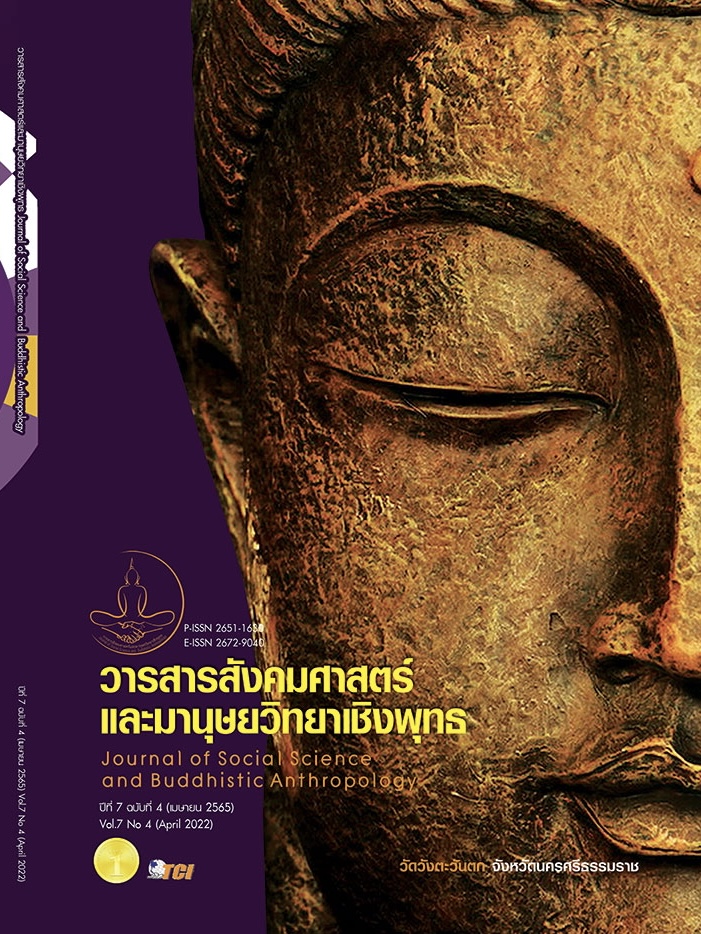BRAND DEVELOPMENT STRATEGY FOR AGRICULTURAL MACHINERY INDUSTRY IN THAILAND
Keywords:
Development Strategy, Brand, Agricultural MachineryAbstract
The objectives of this research article were to 1) brand development strategies for agricultural machinery manufacturing industry in Thailand and 2) guidelines for brand development strategies for agricultural machinery manufacturing industry in Thailand. It is a qualitative research. The tool used was an interview form by key informants, which were divided into 4 groups: A group of executives and academics with experience in the agricultural machinery industry in Thailand and a group of farmers who use agricultural machinery in Thailand. total of 20 people. The results of the study found that entrepreneurs A group of executives and a group of academics with expertise and experience in the agricultural machinery industry in Thailand and a group of 20 farmers who use agricultural machinery in Thailand. The results of the study found that 1) brand development strategies The products are durable and diversified under the brand name. The price strategy should take into account the quality of the product. Priority in business competition In brand development should study Planning together with all departments within the organization Educating employees and users about the brand Brand quality should be maintained by maintaining product quality. Brand development by procuring raw materials within the country Innovations should be adjusted in accordance with the competitive market situation. In terms of performance, social responsibility influences the product in the long run. Adhering to the quality of service to make customers feel trust and have confidence in the brand, which affects the expansion of sales and profit. 2) Brand development guidelines. Collect data and analyze the needs of customers or real users and meet the needs of customers and users.
References
ญาณพล ลิมปนะโชคชัย. (2564). เครื่องจักรกลการเกษตรรุ่ง เอกชนชี้ส่งออกทำเงินกว่า 3 หมื่นล้าน. เรียกใช้เมื่อ 31 พฤษภาคม 2564 จาก https://www.naewna.com/ business/538351
วิสิษฐ์ พรหมบุตร. (2562). ลักษณะของผู้ซื้อ-ลักษณะเว็ปไซค์ที่มีต่อการซื้อสินค้าทางอินเตอร์เน็ตในตลาดเกิดใหม่. วารสารวิชาการ สถาบันวิทยาการจัดการแห่งแปซิฟิค, 9(3), 1-15.
สำนักงานนโยบายและยุทธศาสตร์การค้า. (2564). ข้อมูลกระทรวงพาณิชย์ภาวะการค้าระหว่างประเทศของไทยประจำเดือนเมษายน 2564. เรียกใช้เมื่อ 25 กรกฎาคม 2564 จาก
http://www.tpso.moc.go.th/th/node/11062
สุนทรียา ไชยปัญหา และคณะ. (2559). ความสัมพันธ์เชิงโครงสร้างของการจัดการความรู้ที่มีต่อองค์การแห่งการเรียนรู้ ความคล่องตัวขององค์การและความได้เปรียบในการแข่งขันของธนาคารพาณิชย์ใน
ประเทศไทย. วารสารวิชาการมหาวิทยาลัยราชภัฏ (มนุษยศาสตร์และสังคมศาสตร์), 10(3), 89-104.
เสาวณี จันทะพงษ์ และพรชนก เทพขาม. (2561). นวัตกรรมการเกษตร: ทางออกปัญหาความเหลื่อมล้าของไทย ตอน 1 บทวิเคราะห์ทางเศรษฐกิจ สายนโยบายการเงิน. กรุงเทพมหานคร: ธนาคารแห่งประเทศไทย.
อภิชัย พันธเสน และคณะ. (2550). การประยุกต์พระราชดำริเศรษฐกิจพอเพียงกับอุตสาหกรรมขนาดกลางและขนาดย่อม. (พิมพ์ครั้งที่ 2). กรุงเทพมหานคร: สำนักงานกองทุนสนับสนุนการวิจัย (สกว.).
Banker, D. R. et al. (2014). Does a Differentiation Strategy Lead to More Sustainable Financial Performance than a Cost Leadership Strategy? Management Decision. Journal of
Business Ethics, 52(15), 872-896.
Belz, F. M. & Peattie, K. (2012). Sustainability marketing.A global perspective. (2th ed.). Chichester: John Wiely & Sons.
Berry, L. (2000). Cultivating Service Brand Equity. Journal of the Academy of Marketing Science, 28(7), 128-137.
Feng, T. & Wang, D. (2016). The Influence of Environmental Management Systems on Financial Performance: A Moderated-Mediation Analysis. Journal of Business Ethics, 135(2), 265-278.
Giese, J. L. & Cote, J. A. (2000). Defining Consumer Satisfaction. New York: Academy of Marketing Science .
Kapferer, J. N. (2001). Reinventing the Brand. London: British Library Cataloguing in Publication Data.
Kotler, P. & Armstrong, G. (2006). Principles of Marketing. (7th ed). New Jersey: Prentice-Hall, Inc.
Kotler, P. (2000). Marketing Management. The Millennium edition. New Jersey: Prentic - Hall.
Prajogo, D. I. & Mcdermott, P. (2011). Examining Competitive Priorities and Competitive Advantage in Service Organizations Using Importance‐performance Analysis Matrix. Managing Service Quality: An International Journal, 21(5), 465-483.
Smmagonline. (2018). KUBOTA Farm, a model to create a brand of love in the heart of Thai agriculture. Retrieved May 31, 2021, from https://www.
smmagonline.com/2018/07/12/kubota-farm
Weng, M. L. et al. (2018). Strategic Brand Management for Higher Education Institutions with Graduate Degree Programs: Empirical Insights from the Higher Education Marketing mix. Journal of Strategic Marketing, 29(1), 5-6.
Downloads
Published
How to Cite
Issue
Section
License
Copyright (c) 2022 Journal of Social Science and Buddhistic Anthropology

This work is licensed under a Creative Commons Attribution-NonCommercial-NoDerivatives 4.0 International License.








